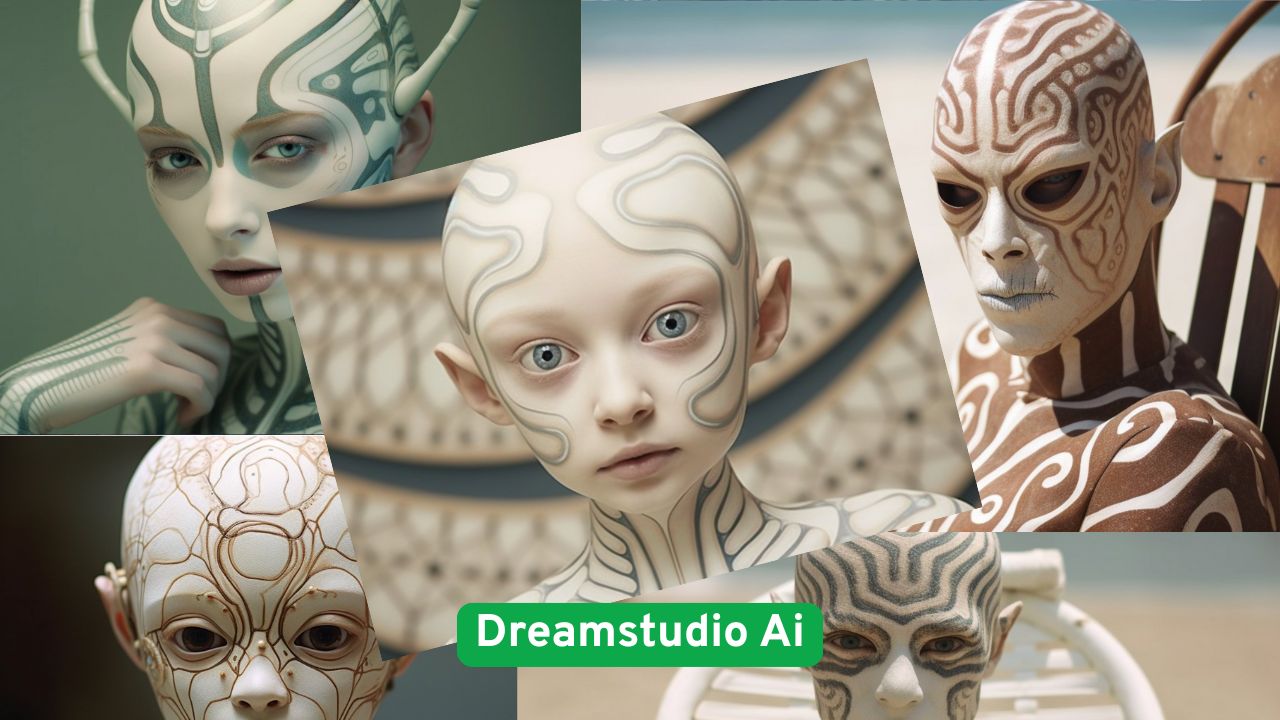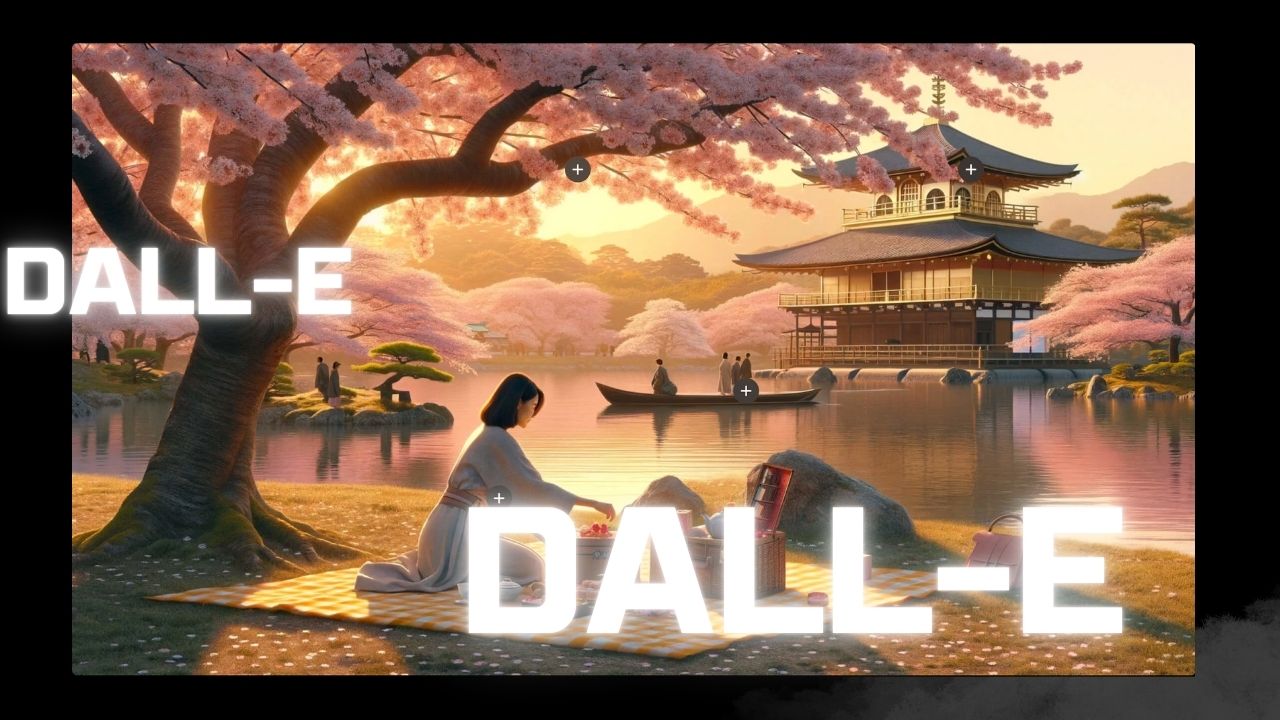DreamStudio AI
Have you ever had a vision stuck in your mind, struggling to find the skills to bring it to life? I’ve been there—sitting at my desk, staring at a blank screen, wishing I could turn my ideas into something tangible. That changed the moment I discovered DreamStudio AI.

As an artist who’s always leaned on words instead of brushes, DreamStudio AI opened a new world. This artificial intelligence design studio isn’t just another tool—it’s a bridge between imagination and reality. With DreamStudio AI, you describe your vision in words, and it turns those words into original artwork.
I’m excited to share how this platform empowers anyone, even those without traditional training, to unlock creativity. DreamStudio AI isn’t about replacing artists; it’s about giving everyone the chance to see their ideas bloom into existence.
Introducing DreamStudio AI: The Future of Creative Design
As an artist or designer, finding the right tool is key. DreamStudio AI is more than just an app—it connects dreams with reality. Let’s explore what makes it special and why it’s changing the game.
What Makes DreamStudio AI Stand Out
- Intuitive interface: No coding needed—just type prompts to generate images.
- High-quality outputs: Detailed visuals rival traditional software.
- Customization: Adjust settings like style and resolution for unique results.
The Evolution of AI Art Generation
AI art began with simple shapes, but ai software development has made huge strides. Early tools lacked detail, but DreamStudio uses advanced models for stunning scenes. This shows how creative ai solutions are now for everyone, not just tech experts.
The Team Behind DreamStudio AI
Stability AI’s team led the way in creative ai solutions. They focus on making ai software development easy for everyone. With expertise in machine learning and design, they merge technology with creativity.
How DreamStudio AI Transforms Creative Workflows
Exploring DreamStudio AI, I saw how it changes daily creative work. No more hours sketching or tweaking pixels. DreamStudio AI lets users turn ideas into visuals in minutes, saving time for big decisions.
Graphic designers now brainstorm dozens of logo ideas in the morning. Marketing teams create on-brand visuals for campaigns without needing to outsource. Indie game developers make entire asset libraries overnight. This change isn’t just about speed. It’s about making creativity the priority, not just technical work.
- Prototyping: Test 10 design variations instead of one
- Iteration: Refine ideas faster using prompt adjustments
- Scalability: Produce high-quality assets without hiring extra staff
What’s most striking is the designer’s new role. Now, I focus on crafting precise prompts and guiding the AI. The platform does the hard work, turning ideas into real visuals. It’s like having a co-creator that never gets tired of revisions.
These ai-powered design services don’t replace human creativity. They boost it. Machine learning design tools let creatives focus on the “why” and “what if.” The AI handles the “how.” For the first time, small teams can match the output of big studios, making top-notch design accessible to all.
Understanding DreamStudio AI’s Core Technology
Every new tool has amazing tech behind it. Let’s dive into how cutting-edge ai design technology turns your ideas into pictures.
Stable Diffusion: The Engine Powering DreamStudio
DreamStudio AI runs on Stable Diffusion, a fast and precise AI model. It’s open-source and can change based on what you tell it. This makes it very flexible.
It looks at lots of data to guess what pixels should be where. This lets it create images that really match what you want.
How Text-to-Image Generation Works
- You tell DreamStudio what you want to see.
- The AI figures out the important parts of your message.
- Stable Diffusion uses its learning to mix different styles together.
- Then, it fine-tunes the details like colors and shapes.
Technical Capabilities and Limitations
Capabilities:
- It can make images up to 1024×1024 pixels.
- It can handle many styles, from real to abstract.
- It can even understand detailed prompts like “vibrant cyberpunk cityscape at night.”
Limitations:
- It might not get complex scenes right (like “medieval castle with 12 towers”).
- Free versions might not have the best details on human faces.
- Too much text can confuse it, leading to weird pictures.
Is DreamStudio AI Free? Exploring the Pricing Structure
Are you wondering if DreamStudio AI is free? As an artificial intelligence design studio, DreamStudio offers both free and paid options. Let’s look at how it works.

Free Tier Capabilities and Limitations
The free version gives you 100 credits a month. This is enough for simple projects. Here’s what you can do:
- Small image outputs (up to 512×512 pixels)
- Limited generation steps (20 steps max per image)
- No access to premium styles or advanced parameters
Free users can try things out. But, for more advanced ai software development, you need to pay.
Credit System Explained
Credits decide how much you can create. Here’s what uses credits:
- Image size (larger images cost more credits)
- Complexity (more steps or detailed prompts = higher credit use)
- Premium features (like 4K resolution require extra credits)
Credits reset every month. So, any unused credits from the previous month don’t count.
Premium Subscription Benefits
Premium plans start at $10/month. They offer:
- 500–2000+ monthly credits
- Unlocked high-resolution outputs (up to 2048×2048 pixels)
- Priority support and exclusive styles
Premium users also get tools for professional ai software development. This includes API access and bulk generation.
DreamStudio AI vs. Midjourney: A Comparative Look
I’ve tested both DreamStudio AI and Midjourney to help you choose the right ai-driven studio solutions for your creative needs. Here’s what makes them different:
- Interface: DreamStudio has a web-based platform with direct controls. Midjourney uses Discord commands, making it easier to start.
- Output style: Midjourney creates bold, surreal images with little input. DreamStudio lets you tweak details like lighting and textures for exact results.
- Pricing: DreamStudio has a credit system with a free tier and paid upgrades. Midjourney’s free version has quality limits, but its premium plan offers better resolution.
- Customization: DreamStudio’s sliders and tools give you more control over your work. It’s perfect for professionals who need precision.
Midjourney is great for quick sketches or unique looks. But DreamStudio is better for detailed adjustments and stable workflows. Your choice depends on whether you want ease of use or detailed customization.
My Experience Creating Art with DreamStudio AI
When I first logged into dreamstudio ai, I wasn’t sure what to expect. The interface felt intuitive, but mastering it took time. Early attempts produced mixed results—some blurry, others too abstract. Yet, with practice, I discovered a rhythm that turned frustration into fascination.
First Impressions and Learning Curve
My initial projects struggled with vague prompts like “abstract nature scene.” The platform needed clearer direction. After a week of trial and error, I grasped how specificity transforms outputs. Learning to balance creativity with technical precision became key to harnessing dreamstudio ai’s full power.
Prompt Engineering Tips for Better Results
- Use style references (e.g., “cyberpunk cityscape in the style of H.R. Giger”)
- Combine textures and moods (“soft watercolor with neon accents”)
- Test negative prompts to eliminate unwanted elements
These tweaks leveraged digital innovation with ai to turn abstract ideas into tangible visuals.
Showcasing My Favorite Creations
My “Neon-Ethnic Fusion” piece blended traditional patterns with futuristic hues. The prompt: “Geometric Kente cloth transformed into a holographic surface.” Post-processing in Photoshop added depth, but the core concept emerged purely from dreamstudio ai. Another standout was “Oceanic Dreamscape,” where I combined “bioluminescent jellyfish floating in a glass vase” with a Van Gogh-inspired brushstroke filter. These projects showcased how digital innovation with aiexpands creative boundaries I’d never imagined.
Advanced Techniques for DreamStudio AI Mastery
To master DreamStudio AI, explore its technical features and creative possibilities. Here’s how to elevate your work with cutting-edge ai design technology.
Optimizing Your Prompts for Specific Art Styles
Being specific is essential. For machine learning design tools, use prompts like: “Cyberpunk cityscape with neon lighting and retro-futuristic architecture” or “Manga-style character with dynamic shading.” Try different versions to find the perfect style. Here are some examples:
| Art Style | Prompt Template |
|---|---|
| Impressionism | “Soft brushstrokes, light-dappled scenes, vibrant color palette” |
| Steampunk | “Gears and brass details, vintage industrial aesthetic” |
Using Parameters to Fine-tune Results
Adjust these settings for precise control:
- CFG Scale: Higher values (7-10) for precise prompt adherence
- Steps: 20-50 steps balance speed and detail quality
- Seed Values: Save seeds to reproduce favorite outputs
Incorporate into Your Workflow
Blend AI with traditional methods:
- Use outputs as concept sketches for digital painting
- Generate multiple variants to refine final designs
- Combine AI art with 3D modeling software
Exploring these techniques opens up new creative paths. Remember, mastering comes from experimenting with parameters and refining your workflow with cutting-edge ai design technology.
The Business Applications of AI-Powered Design Services
Today, businesses are using ai-powered design services to change how they work and grow. They apply tools like DreamStudio AI to make things faster and better. This means making products quicker and creating lots of marketing visuals fast.

| Application | Traditional Process | AI-Enhanced Process |
|---|---|---|
| Product Visualization | Manual 3D modeling requiring weeks | Generates 360-degree renders in minutes |
| Marketing Campaigns | Months of designer hours for limited concepts | Rapid iteration of hundreds of drafts |
| Social Media Content | Time-consuming to create daily posts | Automated style-matched visuals |
Companies using digital innovation with ai get products to market 40% faster. For example, a fashion brand might save 30% on prototyping with AI. The benefits go beyond saving money; they help stay ahead in fast markets.
When using these tools, businesses need to keep their brand’s voice in mind. Training teams on how to use AI ensures designs fit the brand. I’ve seen startups improve their creativity by mixing AI with human touch.
Early users in retail and advertising are already getting ahead. As ai-powered design services improve, they’ll play an even bigger role in innovation. Businesses that start using these tools now will lead in digital innovation with ai.
Conclusion: Embracing the Creative AI Art Generation
DreamStudio AI changes how we think about creativity by combining human ideas with tech. It makes complex tasks easy for all, from newbies to experts. I’ve seen how creative ai solutions don’t replace artists but open up new possibilities. They turn ideas into real images with just a few words.
Using these tools, I found new ways to think, improve, and create ideas. Even though there are debates about ethics and who owns the work, AI’s main role is to help human creativity. The tips I shared, like improving prompts or mixing AI with old methods, show how to use these tools well. This way, you can keep your unique style.
The future of ai-driven studio solutions looks bright, with more tools in our work. Imagine working with AI in real-time or systems that get to know you better. For now, start small. Try the free version, test different prompts, and see how DreamStudio fits into your work. Whether you’re making a logo, a book cover, or exploring new art, these tools give you freedom like never before.
My advice? Don’t wait. Start using DreamStudio today. The next big thing in creative ai solutions will get even better, but the real work starts now. Your next masterpiece could be just a few words away.
FAQ
What type of AI tool is DreamStudio?
DreamStudio is a tool that turns text into images using advanced AI. Just describe what you want, and it creates unique pictures. You don’t need to be an artist to use it.
How does DreamStudio AI stand out from other AI art generators?
DreamStudio is known for its easy-to-use interface and high-quality images. It also lets users control the creation process. This makes it great for artists and designers at all levels.
What is Stable Diffusion, and how is it related to DreamStudio?
Stable Diffusion is the AI model behind DreamStudio. It takes text prompts and turns them into beautiful images. This is key to DreamStudio’s ability to create stunning visuals.
Is DreamStudio AI free to use?
Yes, DreamStudio has a free version with some limits. New users get a few free credits. But, for more features and better quality, you’ll need to pay or subscribe.
How can businesses utilize DreamStudio AI?
Businesses can use DreamStudio AI for many things. It’s great for showing off products, making marketing materials, and quick design prototypes. It saves time and money, making it a big help in business.
What are some tips for prompt engineering with DreamStudio?
For better results, use clear and detailed language in your prompts. Add style references and experiment with different ideas. This will help you get the best images from DreamStudio AI.
What are the limitations of DreamStudio AI?
DreamStudio AI is powerful but has its limits. It might not always get your prompts right, and it can struggle with complex scenes or faces. Knowing these limits helps you use the tool better.
How can I incorporate DreamStudio AI into my existing creative workflow?
You can use DreamStudio AI for many things. Try it for concept art, mix it with traditional methods, or create new versions of your work. It can help you be more creative and work more efficiently.





